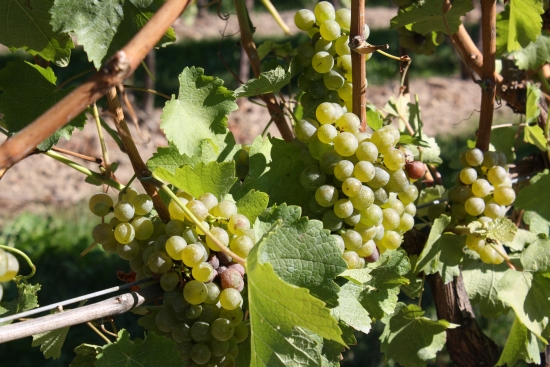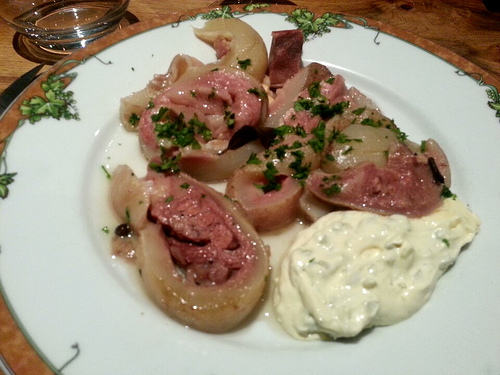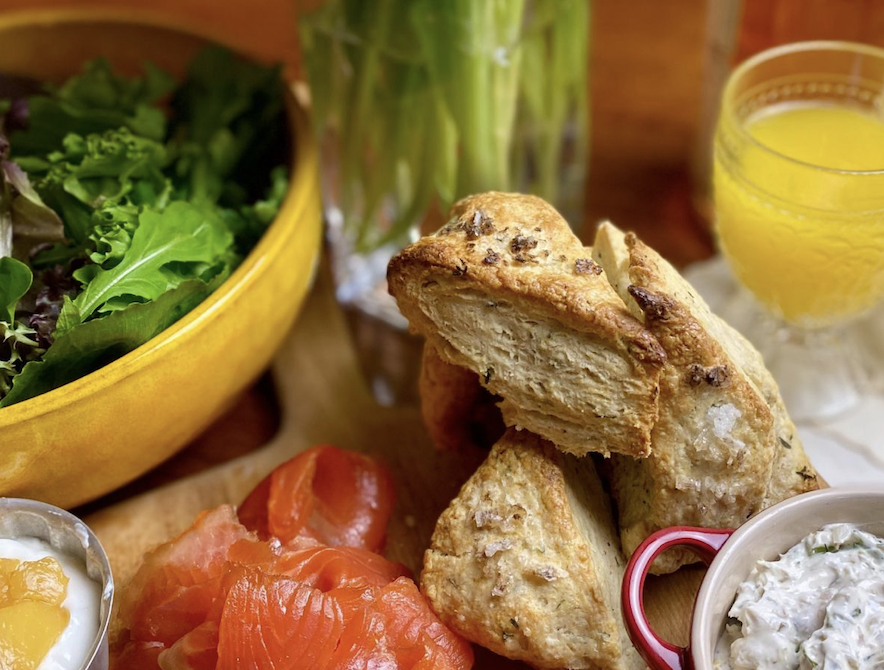Marjoram turns out to be a mysterious herb. Not only can be hard to tell what kind of marjoram one might have growing in one’s garden, but it’s flavour properties will depend on where its grown and the weather of the growing season, much like the variances terroir and climate bring to wine grapes. Whatever kind one might have, the flavour range for “pot”, “winter” or “sweet” marjoram will slide around a scale of oregano and thyme. Oregano is actually a kind of marjoram, or as The Oxford Companion to Food (1st Ed., 1994, A. Davidson, Ed.) puts it, it’s a name “applied in an unsystematic way” to marjorams that “exhibit an oregano flavour”. Apparently we North Americans are particularly fond of calling marjoram “oregano”, which is helpful to know when we read British cookbooks that reference marjoram. All of this, of course, may make for fascinating botanical debate, but it doesn’t help much in terms of getting dinner on the table.
I like marjoram because it’s a break from the five more common fresh herbs I use a lot of: parsley, basil, mint, thyme and rosemary. I think of it as having larger leafs than what I call oregano, which is how it’s generally segregated in Canadian grocery stores. The River Cafe (London) series of cookbooks includes a delicious recipe for ‘Potatoes with Lemon’ which showcases the herb. It calls for a standard roasted potatoes in olive oil treatment, but instead of garlic and rosemary and/or thyme, it calls for lemon wedges and big chunks of torn up marjoram leaves. The lemon wedges not only perfume the potatoes and give them a bit of acidic zip, they also become deliciously candied. The marjorum infuses its herby, slightly soapy aromatics into the potato flesh too.
Marjoram may also be used fresh. I find it a particularly interesting (in a good way) substitute for basil in a Caprese salad. Or, since it’s grilled fish season, it’s greatest application may be as the star ingredient of salmogrilio, the Southern Italian answer to gremolata. Salmogrilio, in its simplest form (there are as many recipes as there are villages across the foot end of the boot) is olive oil, lemon, garlic, salt and marjoram. It works just as well with grilled light meats, like pork chops or even lamb
 Malcolm Jolley is a founding editor of Good Food Revolution and Executive Director of Good Food Media, the not-for-profit corporation which publishes it. Follow him at twitter.com/malcolmjolley
Malcolm Jolley is a founding editor of Good Food Revolution and Executive Director of Good Food Media, the not-for-profit corporation which publishes it. Follow him at twitter.com/malcolmjolley







